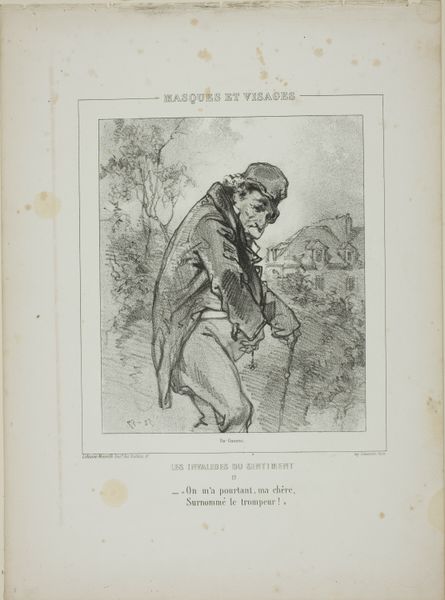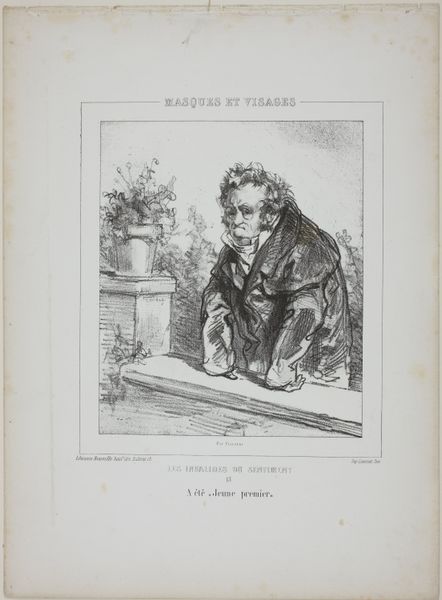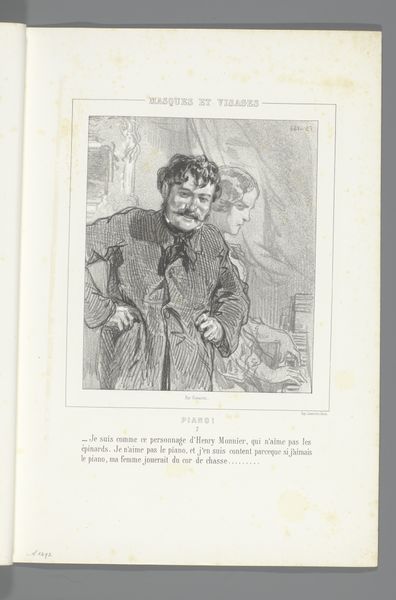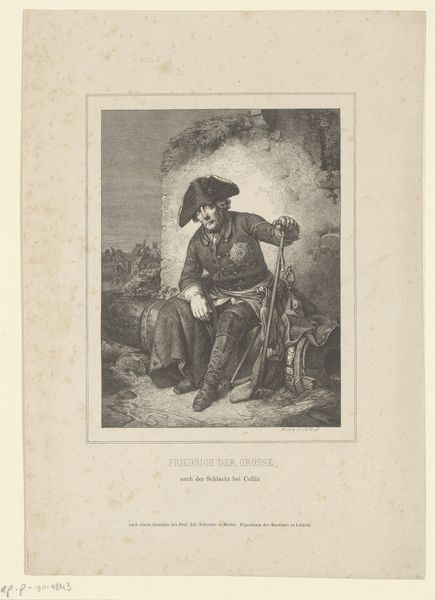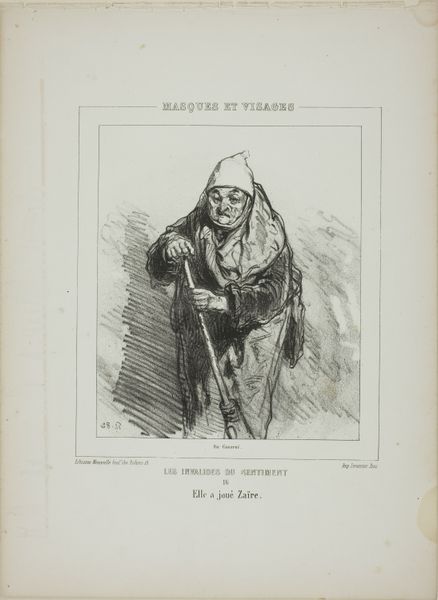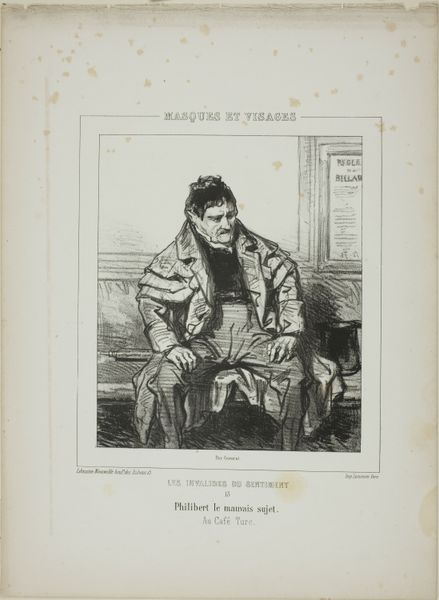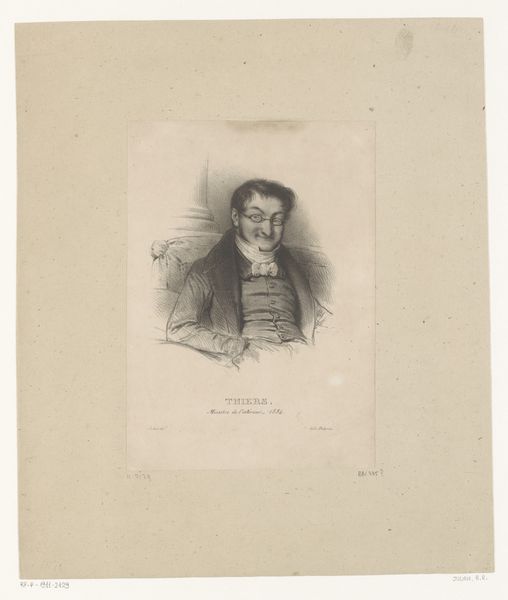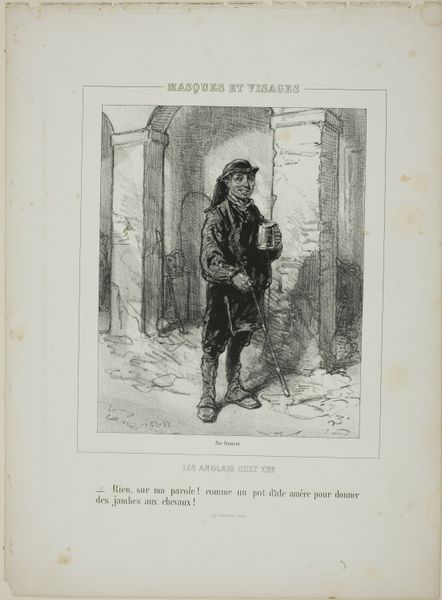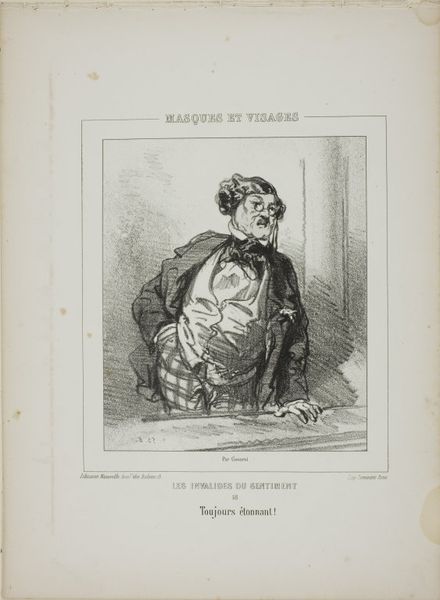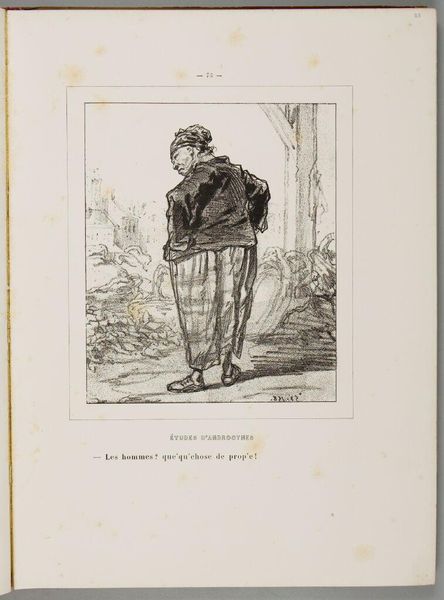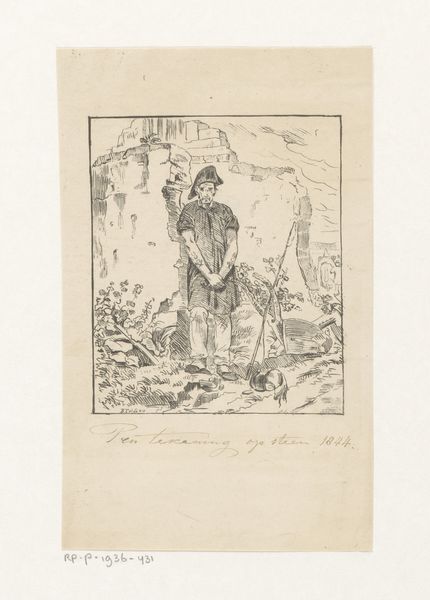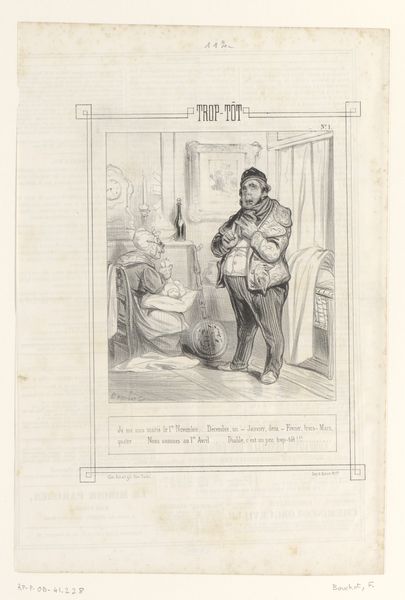
Copyright: Public domain
Curator: This drawing, “Les Invalides du Sentiment: J'ai longtemps parcouru le Monde...” created around 1852 by Paul Gavarni, offers an interesting window into 19th-century Parisian life through the lens of Romanticism. The work seems to be a print, exhibiting genre painting conventions, based on Gavarni’s original drawing. What's your immediate reaction to this artwork? Editor: It's melancholic, immediately so. The slumped posture of the figure, the somber facial expression. The etching-like effect adds a layer of gloom and makes me consider what invisible societal pressures have left the figure this way. Curator: That feeling aligns with Gavarni’s broader oeuvre and the print’s title. He frequently explored the weariness and cynicism hidden beneath the surface of Parisian society, a theme relevant to Romanticism’s turn towards emotional introspection. The "invalids of sentiment"—it speaks volumes about disillusionment. Editor: Exactly. I see it as more than just personal disillusionment. Given the social context of 1850s France, it’s hard not to view this image as a commentary on societal failures—the failed revolutions, the rise of industrial capitalism. The figure seems trapped by those developments, physically and emotionally weary. Curator: And it's crucial to note that Gavarni often aimed his critique at the bourgeoisie, depicting their hypocrisies and moral failings through satire. This invalid of sentiment perhaps reflects the hollow promises of bourgeois life and romantic ideals. The text beneath it reads: “I have long traveled the world. And people have seen me everywhere, wooing brunettes and blondes alike. Loving, sighing haphazardly...” There's such profound ennui captured in those lines. Editor: The way the text implicates the figure is sharp: pursuing pleasure superficially but unable to find lasting connection or purpose. The casual dismissal, “loving, sighing haphazardly...” highlights the figure's apathy but it simultaneously reflects the role assigned to this person. Was this character afforded choices or was life determined by prescribed social customs? That kind of nuanced social critique really distinguishes Gavarni’s work. Curator: I completely agree. It encourages us to contemplate not only individual despair, but the systemic forces that might lead someone to this point of exhaustion. And Gavarni distributed the imagery using lithographs in journals to comment directly on those systems. Editor: It prompts us to ask ourselves what systems operate today to generate similar effects, even two centuries later. And what might solidarity look like for contemporary "invalids of sentiment." Curator: Absolutely. The piece makes one consider the social function of Romantic imagery then, and the lessons that prints, such as this one, hold for audiences today.
Comments
No comments
Be the first to comment and join the conversation on the ultimate creative platform.
